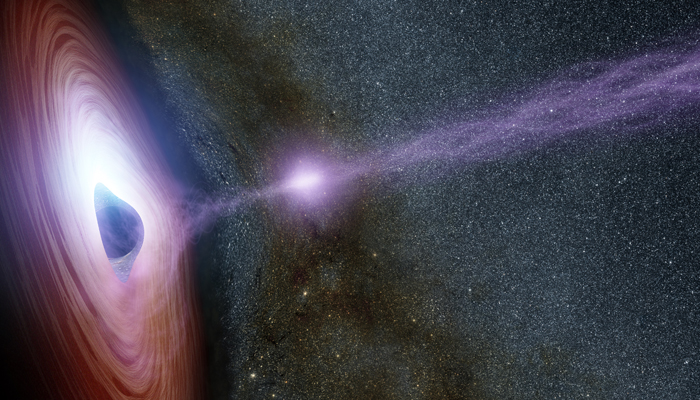Astronomers find first-ever star gradually eaten by black hole
As there are number of large black holes, this recently discovered is small one with mass of a few hundred thousand times larger than sun
September 11, 2023

Astronomers have found for the first time a sun-like star being gradually eaten in chunks — as large as three times the size of the Earth — by a supermassive black hole located about 520 million light years from our solar system.
The new revelations will allow scientists to understand further the destructive relationship between the enormous deep space objects.
The nearest-to-Earth supermassive black hole Sagittarius A* is located at the centre of the Milky Way galaxy and is four million times bigger than our Sun, according to the research paper published in the journal Nature.
Black holes are massive objects present in nearly the centre of nearly every giant galaxy. It also forms when a giant star dies and collapses under its own weight. These space objects are so powerful that they pull inside everything which enters their event horizon. Not even light can escape from their potent pull.
According to a recent study, astronomers noted that they have identified a supermassive black hole at the centre of a relatively nearby galaxy as its feast is underway eating chunks of the star.
The observation also noted that the size of the consumption is huge as the star passes near the black hole on its elongated oval-shaped obit.
Researchers noted in the study published in the journal Nature Astronomy that the giant star is located at a distance of about 520 million light years from our solar system.
A light year is the distance light travels in a year, 5.9 trillion miles (9.5 trillion km). It was observed being plundered by a supermassive black hole at the heart of a spiral-shaped galaxy.
As there are a number of large black holes, this recently discovered is a small one with a mass of a few hundred thousand times larger than the sun.
The data used for the study was from Nasa's orbiting Neil Gehrels Swift Observatory.
The cosmic prey was observed orbiting the black hole every 20 to 30 days. As it comes to its one end of the orbit, closing into the celestial hunter, it experiences its stellar atmosphere sucked away, or accreted, each time it passes.
The distance is enough to save the whole star shredded. Such an event is called a "repeating partial tidal disruption."
After the stellar material is pulled into the black hole, the temperature of the matter increases up to around 3.6 million degrees Fahrenheit (2 million degrees Celsius), resulting in an immense amount of X-rays.
Astrophysicist Rob Eyles-Ferris of the University of Leicester in England, one of the authors of the study said: "What's most likely to happen is the star's orbit will gradually decay and it will get closer and closer to the supermassive black hole until it gets close enough to be completely disrupted."
"That process is likely to take years at least — more likely decades or centuries," Eyles-Ferris added.
"There are lots of unanswered questions about tidal disruption events and exactly how the orbit of the star affects them," Eyles-Ferris said.
"It's a very fast-moving field at the moment. This one has shown us that new discoveries could come at any time."









